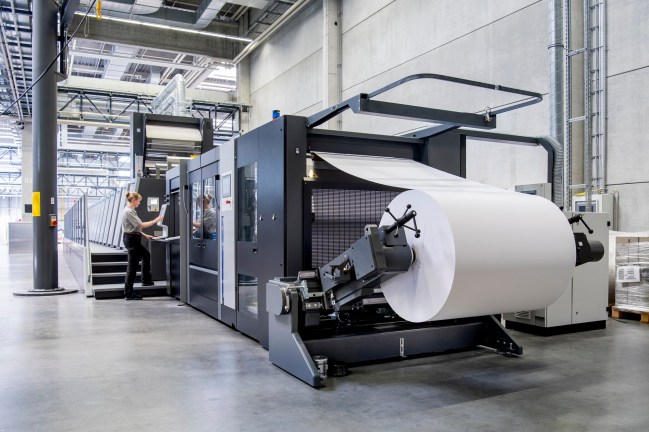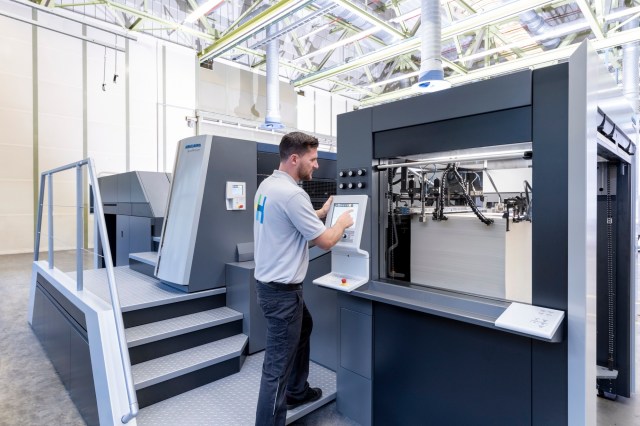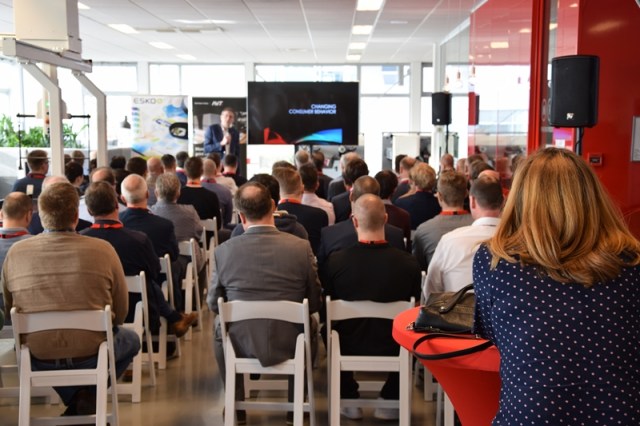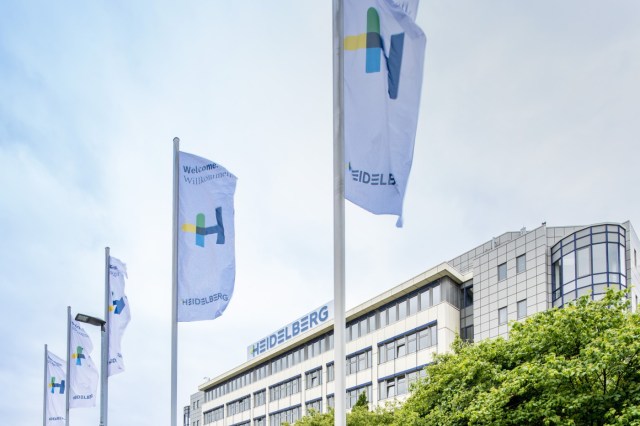
Noticing growth trends in in-mould label and folding carton production, Heidelberg has launched a new IML Performance Package for the 2020 generation Speedmaster XL 106 with fully automatic presetting of all key print job parameters.
The company took to its recent digital customer event to unveil the system, showcasing its special modifications to the feeder and delivery, modified sheet transfer, and anti-static devices that make it possible to reliably process delicate plastic films just 50 microns thick at speeds of up to 14,000 sheets per hour.
The high-performance model for conventional offset printing is equipped with three Y units (drying units) and a delivery with one extension module.
Even with extremely thin substrates, it said customers benefit from reliable sheet guidance and smooth travel through the press.
“The dryer modules are perfectly coordinated with the sheet travel and achieve outstanding drying results at maximum speeds. Distances for paper travel in the delivery remain short and, even at high speeds, sheets are completely stable when deposited on the delivery pile,” it said.
“The configuration with three Y units and highly efficient round-nozzle technology increases the drying capacity by 25 percent and also saves on energy costs, because the distance between the dryer modules and the substrate can be kept to a minimum.”
The redesigned CutStar generation 4 is the basic prerequisite for processing thin substrates at consistently higher speeds. The sheeter is fully integrated into the Prinect workflow and the Intellistart system on the press for production based on the Push to Stop principle.
The format and air values are adjusted fully automatically based on the job data. These settings can be saved and loaded with the print job for repeat orders. A further innovation is the special corona surface treatment integrated into the CutStar, which improves the wettability of plastic materials and makes them easier to print on than untreated materials. The enhanced ink adherence also ensures long-lasting, consistently high quality.
According toHeidelberg, the global label printing market will continue to grow at an annual rate of around four per cent.
“Growth is even expected to be above average in the in-mould label segment, which has not been affected by the COVID-19 pandemic. These labels are typically utilised in the food and cosmetics industries, and by companies producing chemicals for household and industrial use,” it said.
“With its state-of-the-art technology, Heidelberg is playing a key role in improving the efficiency of in-mould label production and is the technology leader in this segment by some margin. The company is looking to build on this strong position and is therefore stepping up its investment in the development of new technologies for IML production.”
Another part of the IML Performance Package is the Speedmaster XL 106-D rotary die cutter, which now has only one die-cutting unit.
“Lower investment costs compared with the previous version means it is easier for print shops to move into the growing in-mould label production segment. The new die cutter requires less space and has a lower power consumption than the Speedmaster XL 106-DD. It is ideal for die-cutting large and nested label shapes,” the company said.
Thanks to its rotary die-cutting principle, the Speedmaster XL 106-D operates at two or three times the speed of flat-bed die cutters. The high precision resulting from the even cylinder surface and evenly cutting die eliminates the make-ready required due to differences in level when using the flat-bed process. The printing pressure can be adjusted in increments of one micron on the Speedmaster XL 106-D. Corrections are possible both parallel and diagonal to the cylinder axis.
In collaboration with its partner Masterworks, Heidelberg has also started series production of the Mastermatrix 106 CSB high-performance die cutter for folding carton production.
At speeds of 9,000 sheets per hour, the Mastermatrix 106 combines die cutting, stripping, and blanking in a single system. Integration into automatic pallet logistics is also possible.
A camshaft drive ensures the platen moves smoothly and gently right up to the highest output levels, which ensures reliably smooth sheet travel. The MasterSet optical register system aligns sheets precisely before they enter the die-cutting station. The print image and cutting die match perfectly for each and every sheet.
Heidelberg has integrated the Mastermatrix 106 into its Prinect workflow, which means pre-settings can be transferred to the die cutter and motorised components can be adjusted and moved into position automatically.


